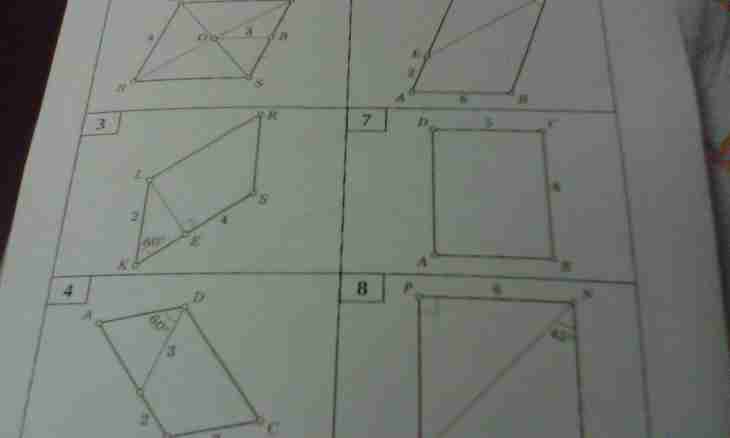Diagonals of a quadrangle connect its opposite tops, dividing a figure into couple of triangles. To find the big diagonal of a parallelogram, it is necessary to make a number of calculations according to initial data of a task.
Instruction
1. Diagonals of a parallelogram have a number of properties which knowledge helps with the solution of geometrical tasks. In a point of intersection they are halved, being bisectors of couple of opposite corners of a figure, smaller diagonal – for obtuse angles, and big – sharp. Respectively, by consideration of couple of triangles which turn out from two adjacent parties of a figure and one of diagonals a half of other diagonal is also a median.
2. The triangles formed by half of diagonals and two parallel parties of a parallelogram are similar. Besides, any diagonal divides a figure into two identical triangles graphically symmetric of rather joint basis.
3. To find the big diagonal of a parallelogram, it is possible to use a well-known formula of a ratio of the sum of squares of two diagonals and the doubled sum of squares of lengths of the parties. It is a direct consequence from properties of diagonals: d1² + d2² = 2 • (a² + b²).
4. Let d2 be big diagonal, then the formula will be transformed to a look: d2 = √ (2 • (a² + b²) – d1²).
5. Put this knowledge into practice. Let the parallelogram with the parties of a=3 and b=8 be set. Find the big diagonal if it is known that it is 3 cm more than smaller.
6. Decision. Write down a formula in a general view, having entered sizes an and b, known from basic data: d1² + d2² = 2 • (9 + 64) = 146.
7. Express length of smaller diagonal of d1 through length bigger according to a statement of the problem: d1 = d2 - 3.
8. Substitute this expression in the first equation: (d2 - 3)² + d2² = 146
9. Square value in a bracket: d2² – 6•d2 + 9 + d2² = 1462•d2² – 6•d2 – 135 = 0
10. Solve the received quadratic equation concerning d2 variable through a discriminant: D = 36 + 1080 = 1116.d2 = (6 ± √1116)/4 ≈ [9.85;-6.85]. It is obvious that diagonal length – positive size, therefore, it is equal to 9.85 cm.

